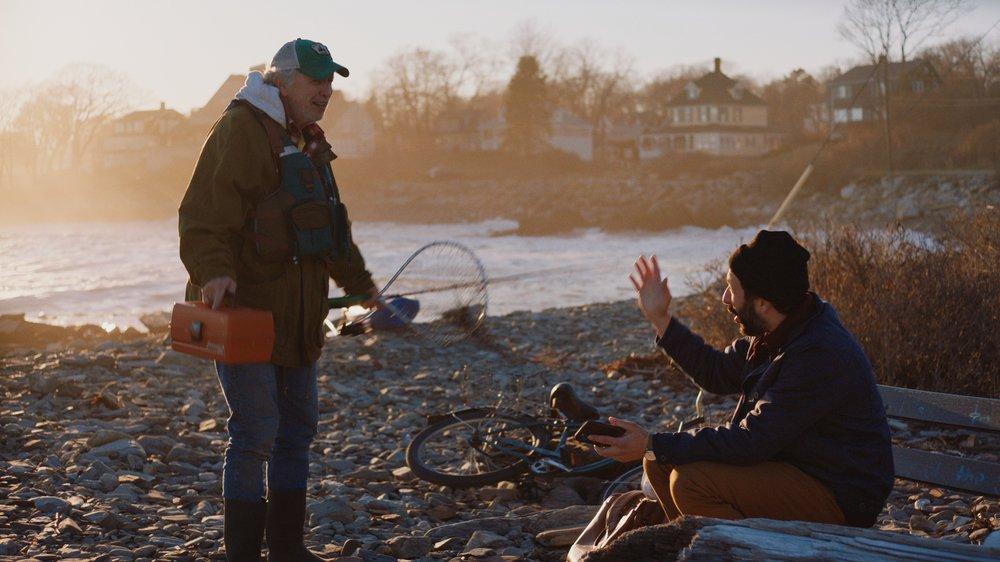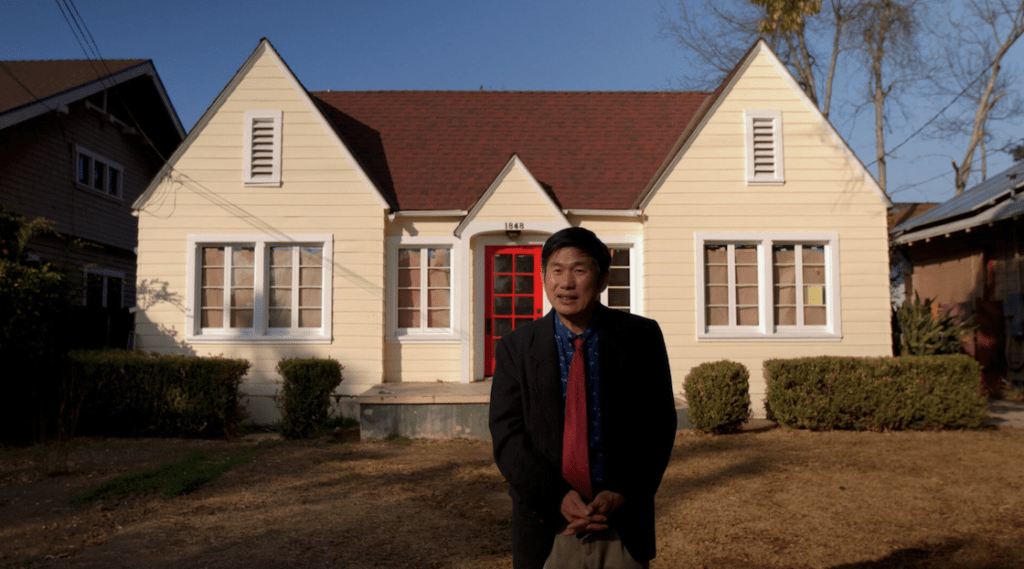“Soundtrack for a Coup D’etat” is a fascinating and highly entertaining study of the unexpected relationship between some famous Jazz musicians and the C.I.A.-backed 1960 assassination of Patrice Lumumba, the first prime minister of the Democratic Republic of the Congo. It opens at the Film Forum Friday, October 25 and will also be screened at the upcoming DOC NYC festival. A Q&A with director Johan Grimonprez will accompany the November 1 screening. Go here for showtimes and tickets.
In 1960 sixteen newly independent African nations were admitted to the United Nations. Western nations feared that the anti-colonialist movements would threaten their geopolitical power. Formerly a colony of Belgium, the Democratic Republic of the Congo was being threatened by a neo-colonialist attempt by Belgium and the United States to install a puppet ruler who would insure that the country’s huge uranium deposits would go to them instead of the Soviets. Jazz legend Louis Armstrong was recruited by the Voice of America to tour Africa and promote American democratic values. When Patrice Lumumba, prime minister of the new liberated Congo, is tortured and assassinated he becomes a symbol of the racism still prevalent in the foreign relations of western countries.
Director Johan Grimonprez tells this cold war story in a unique and compelling way. Newsreel footage, jazz performances and quotations on screen are edited in a witty and suspenseful manner that make the two-and-a-half hour documentary seem much shorter. Jazz masters and politicians are introduced with large graphic titles that recall classic jazz record design.
One of the most interesting persons covered in the doc is Andrée Blouin, a political activist and key advisor to the Pan-African movement. The Belgian secret service defamed her and expelled her on the eve of Congo’s independence. For those unfamiliar to the history of this period it will be surprising to learn that Soviet chairman Nikita Krushchev proposed an anti-colonialist resolution to the UN and one of the board members of the Museum of Modern Art was a C.I.A. agent. And Louis Armstrong later regretted being a pawn for U.S. exploitation of Africa. Decades later, the foreign policy of the U.S. is still dangerously flawed.

The new indie comedy “Hangdog” employs a premise that every screenwriter has probably thought up once–man loses girlfriend’s pet and must find it before she returns–but throws in enough oddball twists and great character acting to make it work. It streams beginning Friday, October 25.
There is even a bestselling screenwriting manual called “Save the Cat!” devoted to principles that help a film become successful, such as “the hero must do something that makes the audience like them and want them to win.” There were a couple of WTF moments in “Hangdog” that actually turned me against the hero: who gives a kidnapper the money without proof that he actually kidnapped the dog? Why doesn’t he tell his girlfriend that he didn’t tell her because he didn’t want to sabotage the important pitch she was making the weekend she was away?
Fortunately Walt (Desmin Borges) wins us back with a lot of help from the colorful, idiosyncratic strangers he meets in his quest to recover his girlfriend Wendy’s dog Tony and they school him on the stupid mistakes he keeps making. Walt is anxious and neurotic, and the recent move to the Maine coastline has elevated his discomfort. His girlfriend (Kelly O’Sullivan) has created a killer app but he is unemployed and still fearful of pursuing his dream job of being a graphic designer. Wendy goes away for a weekend to pitch her app to some investors and all her boyfriend has to do is take care of Tony, a task he fails within hours of her departure.
Along the way he encounters some sweet-hearted oddballs; they give him the emotional comfort Tony provides for Wendy. First, his senior citizen neighbor Marianne (Barbara Rosenblat) teaches him about nonconformity and the importance of being true to your dreams. After an exchange with the teenage kidnapper of Tony goes wrong, he meets Brent (Steve Coulter), a recent widower and artisanal pickle-maker who offers him bourbon and relationship wisdom and helps him confront the villainous kidnapper who lives nearby.
Husband-and-wife creative team Matt Cascella (director and editor) and Jen Cordery (writer) take a shaggy dog story and turn it into a colorful and touching romantic comedy with a memorable cast.

“The House From…” is a new documentary about the good and bad parts of owning and/or living in a home made famous by appearing in a film or TV series. The film is set to premiere on Ryan Reynolds’ Maximum Effort Channel on Fubo, Sunday, October 27th, and will be available for purchase on streaming platforms starting Monday, October 28th.
The best part of the doc is that it gives nostalgia fans visual access to dozens of famous homes they may never have the chance to visit in person. And if they did, they may discover that they are not always welcome. If you go to the Albuquerque, New Mexico home from “Breaking Bad” the current owner will greet you with expletives as she chase you away; who could blame her after so many super fans have tried to recreate the famous scene in which Walt throws an entire pizza onto the roof? The family who owns the house from the cult comedy classic “Friday” have posted a “House Rules” sign: no smoking or yelling and it costs $10 to take a photo in front of the building.
One case explored at length in the film is the Astoria, Oregon home featured in the 1985 film “Goonies,” which has become an endearing classic for those who saw it as a child. (I didn’t care for it when I reviewed it back then; maybe because I was 28-years-old at the time.) Though previous owner Sandy was frustrated by the legions of fans who trekked to see her home and who acted as though their fandom entitled them to deny her any privacy she once allowed a young fan to live in her attic. A new owner is trying to develop a more balanced kind of access for fans to the large house.
Other famous homes featured in the doc include ones from: “Can’t Hardly Wait,” “Family Matters,” “The Golden Girls,” “Halloween,” “Home Alone,” “Mrs. Doubtfire,” “Old School,” “The Outsiders,” “Pee Wee’s Big Adventure,” “Roseanne,” “Short Circuit,” “Silence of the Lambs,” “Planes,Trains and Automobiles,” “Twilight” and “Uncle Buck.” Directed by Tommy Avallones and narrated by Jason Lee, “The House From…” is a briskly edited, nostalgic feast for lovers of pop culture.
Ester Krumbachová is best known as the screenwriter of Czech cult classics “Daisies” and “Valerie and Her Week of Wonders” but she directed one film, “Murdering the Devil,” which plays at the Metrograph this week. The 1970 film was censored and never shown in the U.S. until now. Go here for showtimes and tickets to see this new 4K restoration.
When a single woman in her 40s (Jirina Bohdalová) is called by a high school friend (Vladimír Mensík) she sets about to seduce him through flattery and extravagant feasts she prepares for all his visits to her apartment. He was quite the catch when he was younger but now he is an arrogant, sexist glutton who wolfs down enough food to feed an entire family. His suit is ripped at the seams, his pot belly is exposed because buttons are missing from his shirt. (He looks a bit like a loutish character Fred Armisen would play.)
After she finds that the legs of her furniture have been chewed on, the obliging bachelorette begins to suspect that her handsome devil may actually be the devil himself. Krumbachová employs many of the surrealistic techniques used in the films she wrote for other directors: a flood of culinary excesses, the use of an echo effect on the “devil’s” voice heard over the phone and grandiose theatrical gestures. Essentially a single set film clocking in at only 75 minutes, “Murdering the Devil” is essential viewing for fans of both the Czech New Wave and Feminist Filmmaking.
